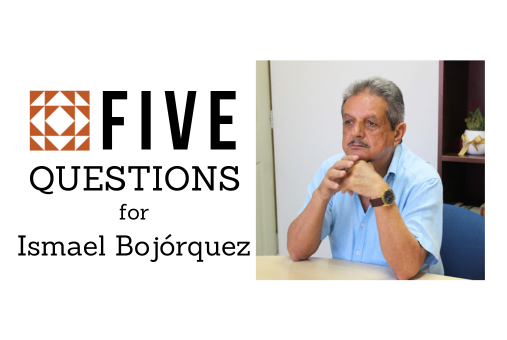This year marks the eighth anniversary of the murder of Mexican journalist Javier Valdez, internationally recognized for his courageous reporting on organized crime, violence and corruption in the state of Sinaloa, one of the epicenters of drug trafficking in Mexico.
Valdez was shot and killed in broad daylight on May 15, 2017, in the city of Culiacán, a few blocks from the newsroom of Ríodoce, the weekly newspaper he co-founded in 2003. Since then, the situation for journalism in Sinaloa has gone from bad to worse.
Violence in that state escalated significantly in July 2024, after U.S. authorities arrested Ismael “El Mayo” Zambada, the longtime leader of the Sinaloa Cartel. The arrest sparked an internal rift within the cartel between the faction linked to Zambada and the group led by the sons of Joaquín “El Chapo” Guzmán.

This rupture unleashed a wave of armed clashes, executions and episodes of public violence that have turned Sinaloa into a battleground between the rival groups. The tightening of the security strategy implemented by Mexican President Claudia Sheinbaum after taking power and under pressure from her US counterpart, Donald Trump, has increased tension in the state.
In this context of escalating violence and constant threats, practicing journalism in Sinaloa is more than ever a very high-risk profession. Valdez's colleague and friend, and co-founder of Ríodoce, Ismael Bojórquez, reflected in an interview with LatAm Journalism Review (LJR) on how Valdez's legacy continues to shape the newspaper’s work in increasingly adverse reporting conditions.
Bojórquez discussed the impact the recent wave of violence has had on press freedom in the state, self-censorship and other challenges facing local journalism today in the face of the power of organized crime and insufficient action by authorities.
* The interview has been edited for length and clarity.
1. Almost a decade after Javier Valdez's tragic passing, how can his legacy be seen in the Ríodoce newsroom?
Ismael Bojórquez (IB). Javier Valdez will always be an indelible presence at Ríodoce. He co-founded the weekly with us and greatly contributed to creating Ríodoce's soul.
We have never stopped demanding that those who plotted his murder be punished. We always remember him with love and appreciation for what we accomplished together.
2. How would you describe the current conditions for practicing journalism in Sinaloa, following the arrests of drug trafficking leaders last year and the start of Claudia Sheinbaum's presidency?
IB. Covering news in Sinaloa, and even more so investigative work, has always been difficult because virtually every sphere of social, political, cultural —not to mention economic— life is permeated by drug trafficking.
But yes, since the war within the Sinaloa Cartel began, we've had to take measures to minimize risks: we never arrive at an event before the police, because fellow reporters have been attacked by gunmen, threatened and had their work equipment, cameras and cell phones taken. We've informally agreed on this with the other media outlets.
People continue to stay informed through the media, but there's also a lot of communication on individual social media accounts, many of which post false information, sometimes maliciously. We've detected that many of those accounts that were active at the beginning of the war later disappeared because their owners were threatened; people have also been able to identify which accounts are spreading false information and have stopped following them.
3. In a context where many newsrooms in the country have opted for self-censorship as a protection mechanism, how has Ríodoce managed to maintain its editorial line without compromising the safety of its team?
IB. We also have self-censorship at Ríodoce; in reality, we practice survival journalism; we never publish everything we know. We tone down, but we always try to publish as much as possible without posing a greater risk to our reporters.
4. What type of support or protection do you think should be strengthened—whether from the State, civil society organizations, or the journalists themselves—so that journalists in Sinaloa can work with greater freedom?
IB. The truth is, there's no way anyone outside our newsrooms can protect us. The government doesn't even protect itself. Proof of this is the fact that many police officers have been killed during this period, and federal forces themselves have been targeted by the warring groups.
Protection must come from the media organizations themselves, especially with precautionary measures when working in the field and also in the way news is presented.
5. What lessons have you learned from practicing journalism in one of Mexico's most complex states? What advice would you give to new generations of journalists who want to cover sensitive issues from a local perspective?
IB. The first lesson is that no story is worth the life of a colleague. Doing journalism in a state like Sinaloa is like walking through a minefield because you never know when a grenade might explode or you might be met with a bullet. The attack can come from a drug trafficker, but it can also come from a politician.
The big problem in these situations is that there is so much impunity. More than 95 percent* of attacks on journalists—according to the government itself—go unpunished. So if someone decides to harm you, they can be sure they won't be punished.
The other lesson is that when it comes to drug trafficking, you must always know what you're going to investigate, how and to what extent. And then how you're going to present it to your readers without putting your colleagues at risk or keeping the risk to a minimum.
*Editor's note: In recent years, the Mexican government has reported impunity rates for crimes against journalists ranging from 90 to 99.75 percent.